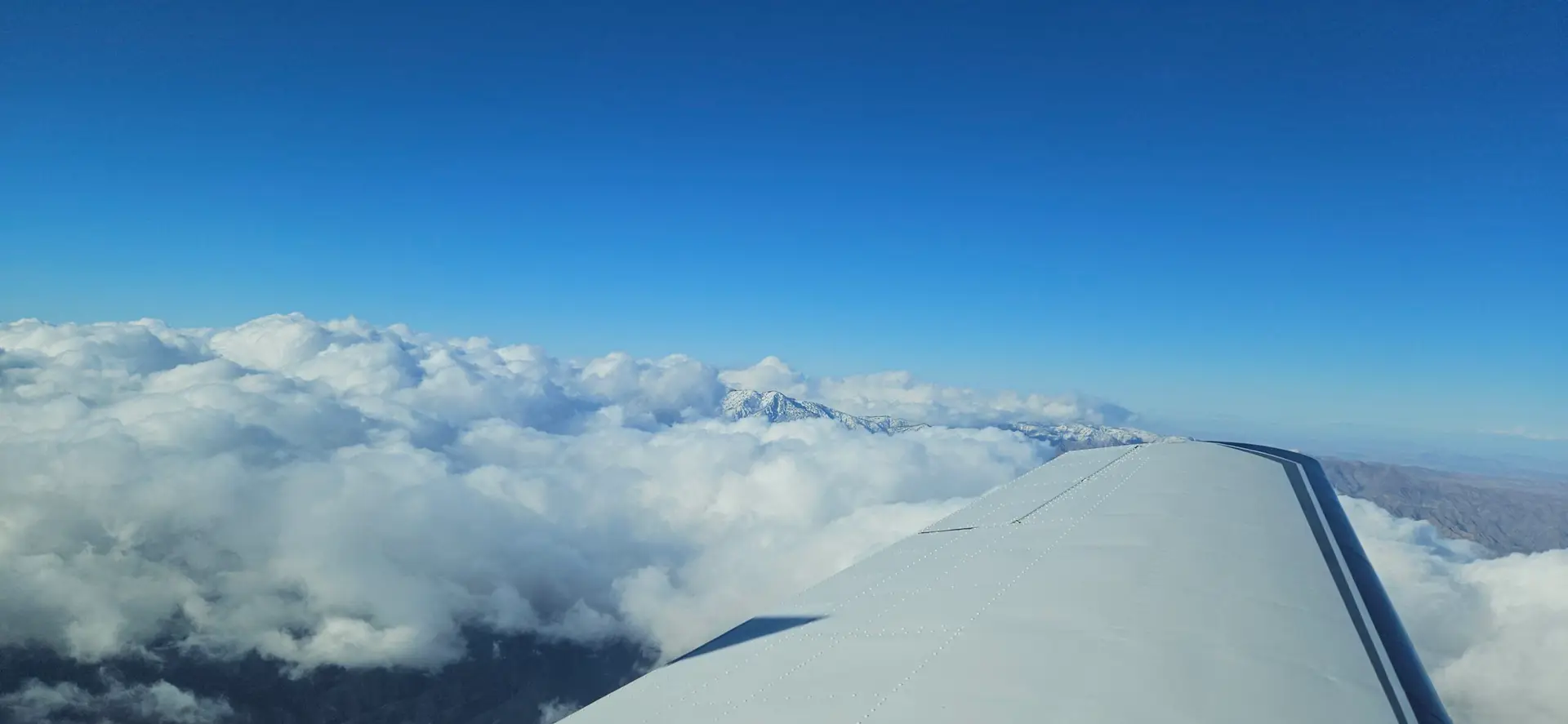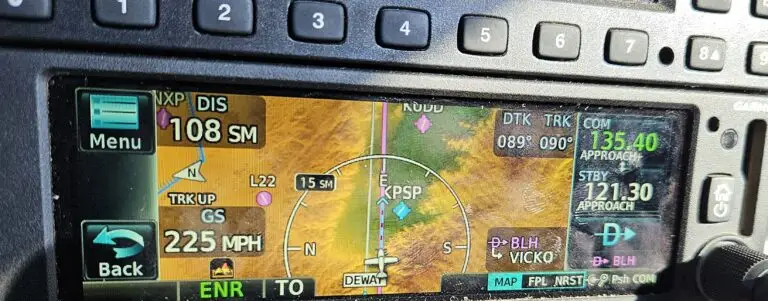Measuring Turbulence
My wife has developed her tolerance for the bumps over the years that we have flown. In the first few hundred hours of flight, I would later learn, there were times that she would picture the grandkids faces as we bumped along to keep her focused on “why” she was making the flight.
Measuring turbulence does have some objective factors. NOAA gives the following guidance on reporting turbulence:
“In reporting turbulence, it is usually classed as light, moderate, severe or extreme. The degree is determined by the nature of the initiating agency and by the degree of stability of the air.
Light turbulence momentarily causes slight changes in altitude and/or attitude or a slight bumpiness. Occupants of the airplane may feel a slight strain against their seat belts.
Moderate turbulence is similar to light turbulence but somewhat more intense. There is, however, no loss of control of the airplane. Occupants will feel a definite strain against their seat belts and unsecured objects will be dislodged.
Severe turbulence causes large and abrupt changes in altitude and/or attitude and, usually, large variations in indicated airspeed. The airplane may momentarily be out of control. Occupants of the airplane will be forced violently against their seat belts.
In extreme turbulence, the airplane is tossed violently about and is impossible to control. It may cause structural damage.
Chop is a type of turbulence that causes rapid and somewhat rhythmic bumpiness.”
However, measuring turbulence does have a subjective aspect to it. One person’s light is another’s moderate, and I’m sure there were times in those first few hundred hours of flying that what I thought was light my wife considered moderate.
Back to Arizona.... Maybe
We hadn’t been back to Arizona to see my dad since mom’s funeral December 21st, and I wanted to make the trip. On the weekend of February 8th everything was lined up, except possibly the weather. I would have things wrapped up at work so I could leave early afternoon on Friday, and we could fly out that evening, spend the day Saturday, and come back Saturday evening.
As the week rolled along, I kept an eye on the weather forecast and it started to make me a little apprehensive. Friday morning, I went to work with a bag packed for the weekend trip, but I wasn’t feeling great about the upcoming flight. There had been rainstorms beginning Wednesday that were to trail off Friday afternoon leaving us with an IFR departure followed by in and out of clouds until we passed the Thermal VOR (TRM) the Salton Sea, about 160 miles east of Fullerton. The freezing level would be well above our 11,000’ cruising altitude so that wasn’t a concern. What was eating away at me was the 40+mph winds forecast at 12,000’ that would be perpendicular to the San Jacinto Mountain Range. San Jacinto sits at 10,834’ and the IFR routing is V64 at 11,000’ crossing the range 8 miles south of the peak where the mountains are only about 7,200’.
There were airmets for moderate turbulence below 18,000’ and I told my wife my concerns about the flight, that it would likely be in the clouds bouncing along. I mentioned to her that if I were flying alone I would do it, but I was certain she wouldn’t appreciate the flight and we should just postpone it a week. After talking to her I called up dad to let him know about the change in plans due to the weather. I laughed a little when he responded, “I’ll still be here next week.” That evening I returned home with the bag I had packed that morning.
Arizona For Real This Time
Fast forward a week and it was raining again off and on, beginning mid-week. The forecast had the rain ending Friday morning, but again there would be high winds. It was almost a cookie cutter version of the previous week, but with one major distinction. If the cloud forecast held true, I could make the entire flight VFR.
The Banning pass runs between San Gorgonio at 11,503’ to the north and San Jacinto at 10,834’ to the south. From Fullerton to the Banning Pass the clouds forecast showed few at 3,000’ and scattered at 6,000’ with tops at 9,000’. I could depart VFR climbing through whatever holes there were in the few/scattered layers and be on top in the clear before getting to the Banning Pass.
Making the flight VFR instead of IFR meant two things. First, if there was turbulence, I wouldn’t be in the clouds, which makes it more tolerable and, in my opinion, safer. Second, I would be going through the Banning Pass instead of over the ridgeline. The Banning Pass is essentially a straight shot about 4 miles wide at its lowest point of 2,200’ and 33 miles wide at the top between the two mountain peaks.
There are stories about turbulence in the pass, and we have been tossed around a little, but generally even in high winds, if the winds are parallel (east/west) to the pass, if you are high and stay in the middle it is not bad. Why? Because the air is funneled through the relatively straight pass it streamlines the flow reducing the eddies and turbulence formed when air goes up and over a ridgeline.
I left again on a Friday morning with a bag packed for the weekend. There was a Sigmet for occasional severe turbulence below 12,000’ and Airmets for moderate turbulence below 18,000’. I checked for pilot reports during the morning along the route. There were two from airliners near Palm Springs, and I normally give extra consideration when the big iron is reporting turbulence, but these didn’t cause me alarm. One was during descent to Palm Springs, and one was on climb out from Palm Springs. Both were on the leeward side of San Jacinto where the air is known to swirl around as the wind goes up and over the mountain and mixes with the wind spilling out into the valley on the east end of the pass. I would be at either 9,500’ or 11,500’ in the middle of the pass and departing eastward.
The Flight
I also watched closely on FlightAware for any small planes transiting the area. There was a Cirrus at 13,000’ that flew the V64 route late morning where I expected turbulence. Flying IFR I hoped it would submit a pilot report if there was anything worth reporting. Just east of the ridgeline it reported mountain wave with airspeeds +/- 20knots but no turbulence. There was also a Sling and a Cessna 172 flying VFR through the Banning Pass but no pilot reports from either one. I left work at 1pm to pick up my wife, advising her that it might still be a bumpy ride.
Just before 3pm we were climbing out to the east through giant holes in the clouds. By the time we were 20 miles east of the field we had passed through 6,000’ and were above everything nearby, but wherever there were mountains the clouds were piled higher. I knew we were going to need to be at 11,500’ to top the clouds through the Banning Pass and continued the climb before finally leveling off with our cannulas from the Inogen G5 keeping our O2 levels in the 90’s.
As we approached the pass, staying in the middle, I told my wife to expect some bumps and we both tightened our seat belts. To the north San Gorgonio was covered in clouds and it wasn’t until we were east looking back that I could see the snow covered peak. To the south we could see the clouds flowing over the top of San Jacinto, driven by 50-60mph winds. Amazingly the ride in the middle was almost completely smooth. I was expecting there to be some turbulence and that staying in the middle of the pass would minimize it, but nothing materialized.
I kept an eye on the speeds on my G5’s. There was a little mountain wave action with the true airspeed bleeding off as the autopilot tried to hold altitude in the downdraft (sink) side but with the quartering tailwind our groundspeed still held above 200mph. It was when we were in the updraft with about 2 degrees nose down that we hit our highest groundspeed ever of 226mph.
Landing with 18-26 knot Crosswind
The landing at Mesa Gateway was a little sporting. Landing on 30C, the winds were from 260 at 22 gusting 31, giving us an 18-26 knot crosswind component. I like to crab down final, straightening out on short final with a sideslip. I know I could take it lower and kick it out just before touchdown but I like to do it on short final to see if I can hold the centerline. With the right rudder pedal all the way to the floor and the left wing down I was holding the center fairly well and continued toward touchdown. As I rounded out I don’t know if it was additional gust, lack of enough aileron, or a combination of both but we touched down about 5’ right of centerline. On the 150’ wide runway it was not a big deal, although I pride myself on touching down on the centerline and was a bit annoyed with myself for missing it.
The tailwind was amazing! Just east of the CA/AZ border we began a descent down to 7,500’ to get below the clouds ahead but still had about 20mph winds pushing us along. Our average groundspeed for the flight, including climb out came in at 184mph. I had hoped come in just under two hours but wheels up to wheels down clocked in at 2:04, still a new record.
We had a wonderful visit with Dad that weekend and got to stop by the cemetery to visit mom’s grave. It was good to see him again and we’re grateful for the blessing of travelling so far so fast. When we back to the airport Sunday he came to see the new panel and paint job.
The winds from Friday and Saturday had dropped off by the time we flew home Sunday afternoon, and we still came in just under 2 ½ hours of flight time.




